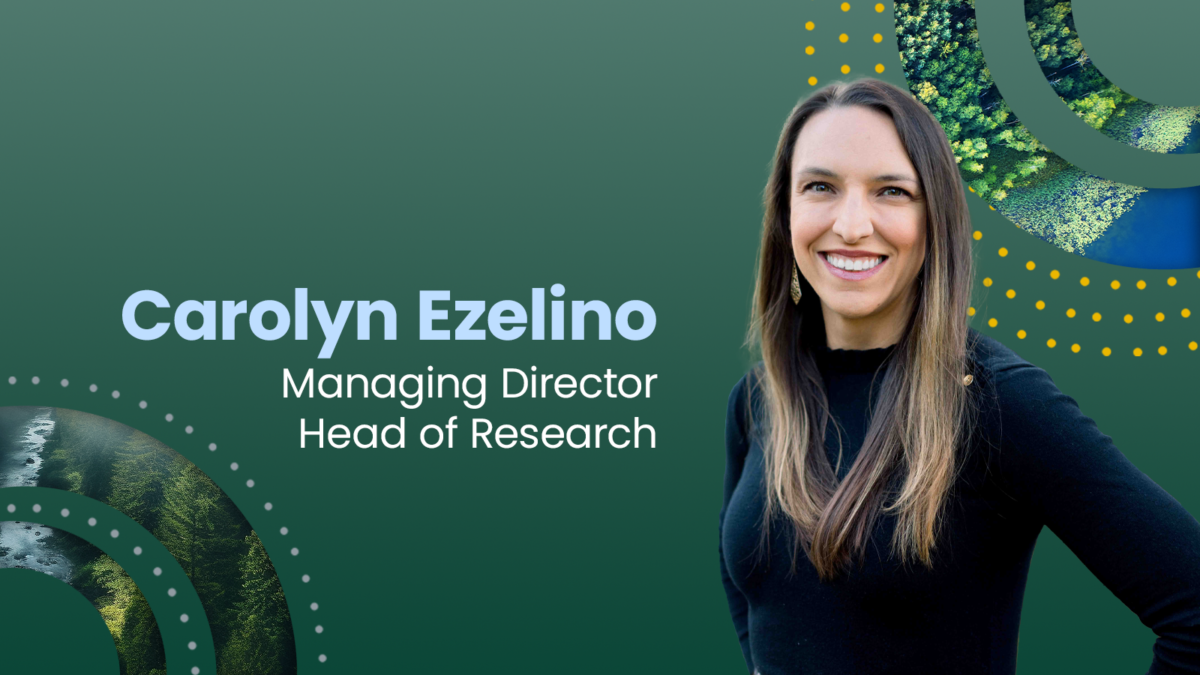 The likes of Harvard and Wharton are teaching investing for both financial and social benefit.
The likes of Harvard and Wharton are teaching investing for both financial and social benefit.
Danielle Reed was already an impact investor when she stepped onto the campus of the University of California-Berkeley Haas School of Business in 2013 — though her family didn’t know it. They thought she worked at a nonprofit. But Reed actually worked for San Francisco-based boutique impact investing firm Imprint Capital, which was gobbled up by Goldman Sachs in 2015.
“Now they can read about impact investing in The Wall Street Journal and The New York Times. They know what it is,” the 32-year-old San Francisco native says.
Indeed, in the past few years the idea of garnering both financial and social returns on investment has moved from the fringe to the mainstream — while also moving toward the mainstream of elite business school curricula.
At the same time, Reed was beginning her business training in Northern California, a new course on impact investing was created at the University of Pennsylvania’s Wharton School. Three years later, Jacob Gray, director of the Wharton Social Impact Initiative, says the course’s enrollment tops the school’s traditional investing course. “It’s become extremely popular,” Gray says.
Starting this fall, Harvard Business School will launch its first iteration of an impact investment course, joining the likes of Columbia Business School, which has been offering similar courses for more than a decade. Duke’s Fuqua School of Business is doing the same.
It may seem as if do-gooder investors are taking over elite B-schools. But ask any top-shelf finance prof and he or she will pump their chests telling you how this is nothing new and they’ve been doing some form of impact investment instruction since the 1950s, when sustainable, responsible, and impact investing (SRI) was first conceived. Everyone wants to be first. In the ’60s and ’70s, amid the United States’ political and social upheaval, environmental, social, and governance (ESG) investing came to the fore. Not until recently, however, have significant curricular and extra-curricular resources in MBA programs been pumped into the phenomenon that many are still trying to properly define. As human rights issues continue to arise in the 21st century, the timing of it all certainly makes sense.
Adding a layer to B-school finance
“Those of us who have been in this world for the past 20 years have had a lot of conversations over those 20 years with only us in the room. And now it’s everyone,” says Cathy Clark, adjunct professor at Duke’s Fuqua School and the director of Fuqua’s CASE i3 Initiative on Impact Investing. Over the past five years, Clark says, significant interest from venture capitalists, investment banks, and even pension funds have led to an influx of new, diverse voices in the room — creating “a welcome conversation. And that makes a difference to the purview of an MBA and this as a career track.”
Between talent development and research, she says, academia has played and will continue to play a major role in the development of the fledgling field. “What changed about five years ago is that we realized the field was catching up and the term ‘impact investing’ had emerged,” says Clark, who has spent 25 years in the field and who taught her first impact investing-related course at Columbia Business School in 2001.
Four years after Clark came to Duke’s Fuqua School in 2007, she created CASE i3. “I thought it would take five or six years to build a robust program,” Clark says. “And I was completely wrong.” Within three years, she says, “significant numbers” of incoming MBA classes indicated through school surveys that they chose Fuqua because of its leadership in the field. Now between 10% and 30% of each class applies to be part of CASE i3. “We are seeing more mainstream finance students trying this out,” notes Clark, adding that the 18 impact investing-related credits offered by the school serve alongside traditional finance courses. “It’s not cannibalizing finance, it’s a layer we want to teach them on top of finance,” she points out. Every year, she says, about 70 to 80 students take Fuqua’s mainstay impact investing course.
The Wharton Social Venture Fund, a $500,000 student-run fund, was created six years ago. Currently more than 60 students are on the team, which Jacob Gray says has grown into the most “popular and selective” club on Wharton’s campus. Each year, about a third of the class shows up to Gray’s introductory meeting for the Wharton Social Impact Initiative, he says, and while many gravitate back to traditional finance, a significant portion are “curious enough to take some kind of content.”
Students at the University of Michigan Ross School of Business also have the opportunity to make impact investments through the Michigan Ross Social Venture Fund. There are two funds at Columbia: Microlumbia, co-founded by MBA students David del Ser Bartolome and Katie Leonberger in 2008, gives MBAs the opportunity to consult and make investments in companies’ existing “under-banked” populations; the Impact Investing Initiative is a multi-disciplinary fund made up of four schools within Columbia, including the business school and the Earth Institute.
At Berkeley, Finance Professor Adair Morse says impact investing is endemic to the school’s identity. “Berkeley is about not just concern with financial health, but also social agenda and improving the world — the kind of things that make Berkeley, Berkeley.”
While the school hasn’t built any specific impact investment-related curriculum, Morse says she and other professors in traditional business disciplines bake a side of social impact into their courses. “Although we could easily fill a class for impact investing, we look at it like ethics,” she says. “Do you want to teach a class on ethics on its own? Or do you want to weave it into the other areas?” Case in point is her New Venture Finance course. Any Haas MBA keen on entrepreneurship takes it. They also receive a hefty dose on impact investing, which Morse says takes up a third of the course. And that’s fine with most students, she says. “Millennials are much more interested in having dual returns, and the MBAs are moving that way strongly, from what we’ve seen,” she says.
Most popular for impact investing-minded Haas MBAs is the Haas Socially Responsible Investment Fund, which the school says is the first and most robust of its kind. Each year, 16 students are selected from an applicant pool to manage the fund, which currently is worth more than $2.6 million. Seren Pendleton-Knoll, the program director of the Haas Center for Responsible Business, is quick to rattle off key points about the fund’s success — most notably, she says, that it has “realized a total return of 0.1721%” in the past year, outperforming the “iShares Russell 3000 ETF’s total return of -0.36% by 53.5 basis points.”
What exactly is impact investing?
If all this seems like a hodgepodge of do-gooder-ness pouring in from all directions, that’s because, in a way, it is.
“The struggle we have with impact investing is meshing too many things under one term,” Morse says. “For us, the goal at the end of all of this is to get more private capital going to investments that … brings social good to something, whether it’s jobs, environment, or poverty.”
If there is a guiding force for impact investing at business schools, it’s the MBA Impact Investing and Training Network (MIINT). Founded in 2011 by Bridges Ventures and the Wharton Social Impact Initiative, the program now has a network of more than 25 of the world’s strongest business schools. Each year, students or teams pick a startup and develop an investment pitch. Judges include Bridges Ventures partners and higher-ups from Bank of America, Merrill Lynch, and Goldman Sachs. Last year, more than 600 students from around the globe competed.
Hodgepodge or not, the impact investing phenomenon is significant. Be it Goldman Sachs’ purchase of Imprint Capital, Blackrock’s launch of an impact fund, or the venture capital and private equity dough pouring into the space, times are changing. Adding more fuel to the impact investment inferno was the publication of the most recent Global Impact Investment Network (GIIN) annual Impact Investor Survey. Regarded the most robust of its kind, the survey offered some interesting numbers. Since 2014, deals from 158 leading impact investors have surged from about 5,400 to the 12,000 or more expected in 2016. At the same time, the total value of the deals leapt from more than $10.5 billion in 2014 to an expected $17.7 billion this year.
“Relative to five years ago, we see a significant uptick in student, faculty, and alumni interest,” says Matt Segneri, director Harvard Business School’s Social Enterprise Initiative. “More people are pursuing internships, conducting research, getting involved in competitions, and transitioning to impact-focused funds.”
According to Matthew Weatherley-White, co-founder and president of CAPROCK Group, a $3 billion multi-family investment fund, impact investing may very well be the next step in modern portfolio theory.“Capital markets are an evolutionary animal. I think we forget that,” he says. Weatherley-White says modern portfolio theory was the dominant staple for future Wall Streeters in business schools from the 1950s on, until it played a significant role in the 2008 market crash. If impact investing can become the next modern portfolio theory, our world might be in better shape than we imagined, Weatherley-White says.
Gray sees it the same way. “My personal prediction is, this is just the way investing is going to get done in the future,” he says. “It will be an anomaly for one not to measure on three dimensions instead of just two. Instead of risk and return, it will be risk, return, and impact.”
A sign of changing times and power shifts
The rise of impact investing comes as white, male, baby boomers begin to pass their wealth and power on to an increasingly diverse millennial generation. More women are enrolled in MBA programs than ever before. Women and millennials seem to be the most interested in impact investing, and the growing programmatic offerings at elite B-schools have come in response to the increased interest.
Amit Bouri, CEO of the GIIN, says this transfer of wealth and leadership will have a “profound impact on fueling the growth of impact investing going forward.”
Weatherley-White agrees. “If you look at the projected $42 trillion of wealth that will be transferred over the next 30 years from the predominately male baby boomers to their wives and children, who are mainly millennials, and you look at who’s driving impact investing, it’s women and millennials,” he explains. “You have to ask yourself, is this an inevitable trend of the capital market? Because the people who have the capital will be asking for it. And I think the answer is yes.”
Speed bumps along the way
Impact investing faces a few obstacles. First is the infancy and lack of proof in the field. Second is the job outlook. “There is a ton of hype around impact investing,” says Danielle Reed, who has since taken a job in the mission-related investing department of Cambridge Associates’ San Francisco office. “In a very short period of time, the industry has become quite well known. But there has been little to show for it.”
Last year, Gray and a Wharton team produced the first significant piece of evidence in a study that examined 53 private equity funds with a total of 557 individual impact investments. They found that in “certain segments” of the market, there were no trade-offs for financial and social returns. “You now have a little bit of ammunition to say it’s at least worth the look,” Gray said.
In a “very preliminary” draft of the completed research Gray shared with We See Genius, investment impact funds performed 13.5% bettter than benchmark traditional venture funds. The robust report examined around 3,500 partners, 5,000 funds, and 25,000 capital commitments. “Our results imply that the supply of impact funds is incomplete, failing to meet demand,” the abstract of the report reads.
In the meantime, rising demand seems to be hobbling the industry’s growth. “There just aren’t that many jobs out there,” Gray asserts matter-of-factly. While Reed was able to pick up where she left off after her MBA, that’s not the case for all graduates — especially those coming from the nonprofit or social sectors. “Their experience is very relevant, but they can’t say they’ve done banking or some other finance job before school,” Reed says. “So the question always becomes, how can I show my potential employer that through my finance classes at business school I am a good candidate?”
Zeina Fayyaz knows what Reed is talking about. The 27-year-old freshly minted Berkeley-Haas MBA has an impressive resume. After graduating from Harvard, Fayyaz went to work at Boston-based nonprofit Root Cause, quickly working her way up to accelerator manager, where she built a portfolio of nonprofits and, later, social enterprises that received $10,000 grants and consulting from her.
Fayyaz grew interested in impact investing at business school. “I never would have been to exposed to as much as quickly without the MBA.” And yet, here she is about a month after graduation with a couple of consulting projects but no full-time employment. She turned down one offer and has been geographically “choosy,” but she has also struggled to win over hiring managers for impact investment jobs. “It’s a harder case to make than I anticipated coming in. And I did everything,” Fayyaz says.
Fayyaz interned at Goldman Sachs last summer, and she spent the past spring interning at San Francisco-based impact investing firm Sonen Capital.
The explanation seems simple to Reed. “There just aren’t that many jobs compared to the people who express an interest in impact investing,” she says.
Patrick Sagisi, an associate at leading impact investing venture capital firm DBL Partners, was surprised to hear that some MBAs struggle to find a place in the impact investing universe. “It’s a big umbrella with a lot of people under it,” he notes. Sagisi, who holds an MBA from Stanford’s Graduate School of Business, suggests that there is an overwhelming abundance of opportunities.
Even with a nonprofit background, Sagisi believes the MBA holds special value among potential impact investing employers, especially within his own office. “We think having an MBA is a critical part of having the skills in understanding businesses and business models in order to be an effective investor,” he says, noting it’s certainly not the only requirement. A policy background is particularly attractive for his firm’s clients in the energy space, he adds.
Reed says that at Cambridge Associates, an MBA is viewed as attractive but not necessary. “In general, do I think an MBA is required to work in impact investing? I think it’s becoming increasingly necessary. Because the space is becoming increasingly competitive,” she says, adding that she doesn’t want to see impact investing “go to a place where we only have ex-bankers working here.”
Ex-bankers or not, impact investing is gaining increasing attention from within and outside business school campuses.
“When people like Bill Gates and even Warren Buffett talk about how capitalism has created the [conditions for] so many problems — wealth and income inequality, environmental degradation — you have to question the system,” Weatherley-White insists. “And that’s the beauty of impact investing. Is it really enough just to be focusing on the financial short-term? And I think the answer collectively is … maybe not.”
See Full Article on Fortune.com


